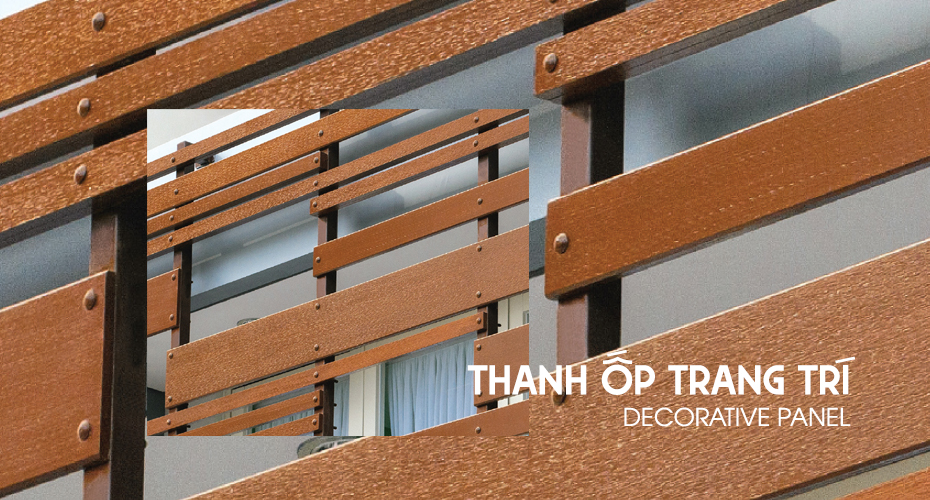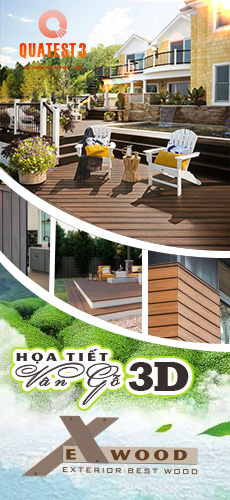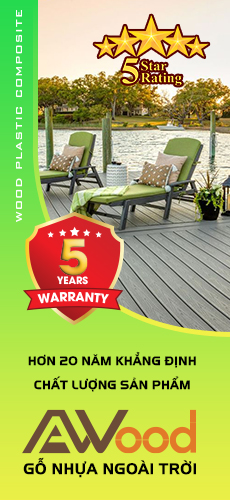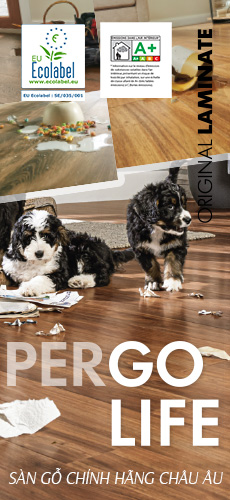- KHO SÀN GỖ QUẬN 2 91 Lương Định Của, Phường Bình An, Quận 2, HCM
Tel/Zalo: 0946 8888 91 - KHO SÀN GỖ QUẬN 6 68A Đặng Nguyên Cẩn, Phường 14, Q6, HCM
Tel/Zalo: 097 8888 395 - KHO SÀN GỖ QUẬN 7 444A Nguyễn Văn Linh, Tân Phú, Quận 7, HCM
Tel/Zalo: 091 8888 923 - KHO SÀN GỖ QUẬN 8 146 Phạm Hùng, X. Bình Hưng, Bình Chánh, HCM
Tel/Zalo: 091 8888 315 - KHO SÀN GỖ QUẬN 9 15 Dương Đình Hội, Phước Long B, Quận 9, HCM
Tel/Zalo: 091 8888 951 - KHO SÀN GỖ QUẬN 10 209 Tô Hiến Thành, Phường 13, Quận 10, HCM
Tel/Zalo: 0913 8888 01 - KHO SÀN GỖ QUẬN 12 484 Nguyễn Văn Quá, Đông Hưng Thuận, Quận 12, HCM
Tel/Zalo: 0913 8888 20 - KHO SÀN GỖ BÌNH TÂN 254 Nguyễn Thị Tú, Bình Hưng Hoà B, Bình Tân, HCM
Tel/Zalo: 084 8888 254 - KHO SÀN GỖ BÌNH CHÁNH 114 Đường số 12 KDC Phong Phú 4, Bình Chánh, HCM
Tel/Zalo: 090 8888 795 - KHO SÀN GỖ BÌNH THẠNH 443 Bạch Đằng, Phường 2, Quận Bình Thạnh, HCM
Tel/Zalo: 091 8888 443 - KHO SÀN GỖ CỦ CHI 410 Tổ 1, Khu Phố 4, Tỉnh lộ 8, Củ Chi, HCM
Tel/Zalo: 091 8888 755 - KHO SÀN GỖ GÒ VẤP 957 Phan Văn Trị, Phường 7, Quận Gò Vấp, HCM
Tel/Zalo: 092 8888 181 - KHO SÀN GỖ HÓC MÔN 249 Tô Ký, Tân Xuân, Hóc Môn, HCM
Tel/Zalo: 079 8888 249 - KHO SÀN GỖ KHA VẠN CÂN 867 Kha Vạn Cân, Linh Tây, Thủ Đức, HCM
Tel/Zalo: 081 8888 528 - KHO SÀN GỖ NHÀ BÈ số 9 Nguyễn Hữu Thọ, Phước Kiển, Nhà Bè, HCM
Tel/Zalo: 089 8888 081 - KHO SÀN GỖ PHÚ NHUẬN 270/10 Nguyễn Trọng Tuyển, Phường 8, Phú Nhuận, HCM
Tel/Zalo: 091 8888 174 - KHO SÀN GỖ TÂY HÒA 137A Tây Hoà, Phước long A, Quận 9, Thủ Đức, HCM
Tel/Zalo: 085 888 8067 - KHO SÀN GỖ QUẬN TÂN BÌNH 760 Lạc Long Quân, Phường 9, Quận Tân Bình, HCM
Tel/Zalo: 091 88888 75 - KHO SÀN GỖ TÂN BÌNH 355 Cộng Hòa, Phường 13, Quận Tân Bình, HCM
Tel: 091 8888 032 - KHO SÀN GỖ TÂN PHÚ 249 Trần Thủ Độ, Phú Thạnh, Tân Phú, HCM
Tel/Zalo: 090 8888 916 - KHO SÀN GỖ TÂN THÀNH 51 Lê Đình Thụ, Tân Thành, Tân Phú, HCM
Tel/Zalo: 090 8888 240 - KHO SÀN GỖ TÂN TẠO 429/39 Chiến Lược, P. Bình Trị Đông A, Bình Tân, HCM
Tel/Zalo: 091 8888 721 - KHO SÀN GỖ THỦ ĐỨC 610 Quốc Lộ 13, Hiệp Bình Phước, Thủ Đức, HCM
Tel/Zalo: 081 8888 610 - KHO SÀN GỖ THỦ ĐỨC(Tam Phú) 234 M Tam Bình, Tam Phú, Thủ Đức, HCM
Tel/Zalo: 090 848 0002 - KHO SÀN GỖ CẦN GIỜ 2795 Huỳnh Tấn Phát, Ấp 6, Phú Xuân, Nhà Bè, HCM
Tel/Zalo: 089 8888 723 - KHO SÀN GỖ SÀI GÒN 223 Phan Huy Ích, Phường 14, Gò Vấp, HCM
Tel/Zalo: 091 8888 223
- KHO SÀN GỖ HÀ NỘI 342 Giải Phóng, Phương Liệt, Thanh Xuân, Hà Nội
Tel: 091 8888 601 - KHO SÀN GỖ HÀ ĐÔNG Số 01, BT5 Khu đô thị Phú Lương, Hà Đông, Hà Nội
Tel: 091 8888 619 - KHO SÀN GỖ TÂY HỒ 586 Lạc Long Quân, P. Nhật Tân, Q. Tây Hồ. Hà Nội
Tel: 091 8888 927 - KHO SÀN GỖ SÓC SƠN 68 Đường 16, Thôn Phú Thọ, Đông Xuân, Sóc Sơn, Hà Nội
Tel: 091 8888 561 - KHO SÀN GỖ MỸ ĐÌNH 123 Nguyễn Văn Giáp, Nam Từ Liêm, Hà Nội
Tel: 091 8888 122 - KHO SÀN GỖ LONG BIÊN 583 Ngô Gia Tự, Đức Giang, Long Biên, Hà Nội
Tel: 091 8888 270
- KHO SÀN GỖ ĐÀ NẴNG 65 Võ Chí Công, Hòa Xuân, Cẩm lệ, Đà Nẵng
Tel: 093 8888 957 - KHO SÀN GỖ CẨM LỆ ĐÀ NẴNG 34 Ông Ích Đường, Thọ Hòa Tây, Cẩm Lệ, Đà Nẵng
Tel: 091 8888 715 - KHO SÀN GỖ HÒA XUÂN ĐÀ NẴNG 113C Võ Chí Công, Hòa Xuân, Cẩm lệ, Đà Nẵng
Tel: 091 8888 473
- KHO SÀN GỖ BIÊN HÒA 126B, Quốc Lộ 1A, khu phố 4, Tân Hiệp, Biên Hòa, Đồng Nai
Tel/Zalo: 089 8888 005 - 091 8888 647 - KHO SÀN GỖ TRẢNG BOM Số 5/4 Lộc Hoà, QL1A, Tây Hoà, Trảng Bom, Ðồng Nai
Tel/Zalo: 091 8888 061 - KHO SÀN GỖ LONG THÀNH Tổ 10 Phạm Văn Đồng, khu Cầu Xéo, Long Thành, Đồng Nai
Tel/Zalo: 091 8888 146 - KHO SÀN GỖ GIA KIỆM 35/2E Quốc lộ 20, Thống Nhất, Ðồng Nai
Tel: 090 8888 635 - KHO SÀN GỖ XUÂN LỘC 404 Hùng Vương, Gia Ray, Xuân Lộc, Đồng Nai
Tel: 081 8888 433 - KHO SÀN GỖ ĐỊNH QUÁN 54 Phố 2, Ấp 3, Phú Lợi, Định Quán, Đồng Nai
Tel: 081 8888 764 - KHO SÀN GỖ LONG KHÁNH Số 1 Quốc Lộ 1A , Đường 21 tháng 4 , KP Núi Tung , TP. Long Khánh , Đồng Nai
Tel: 085 8888 781
- KHO SÀN GỖ BÀ RỊA 75 Nguyễn Tất Thành, Phước Nguyễn, Bà Rịa, Bà Rịa - Vũng Tàu, Vietnam
Tel/Zalo: 0813 9999 72
- SHOWROOm SÀN GỖ VŨNG TÀU 170A Huyền Trân Công Chúa, Phường 8, Vũng Tàu
Tel: 091 8888 165 - KHO SÀN GỖ VŨNG TÀU 117 Huyền Trân Công Chúa, Phường 8, Vũng Tàu
Tel: 081 8888 165
- KHO SÀN GỖ BÌNH DƯƠNG 62 Phạm Ngọc Thạch, Hiệp Thành, Thủ Dầu Một, Bình Dương
Tel/Zalo: 089 8888 062 - 090 8888 062
- KHO SÀN GỖ BÌNH PHƯỚC 729 Quốc lộ 14, Tân Bình, Đồng Xoài, Binh Phước
Tel/Zalo: 089 8888 729 - 090 8888 193
- KHO SÀN GỖ TÂY NINH 445 Lạc Long Quân, Hiệp Tân, Hoà Thành, Tây Ninh
Tel: 089 8888 250 - KHO SÀN GỖ TRẢNG BÀNG 244A Nguyễn Văn Rốp, Trảng Bàng, Tây Ninh
Tel: 070 8888 170
- KHO SÀN GỖ KHÁNH HÒA 442 Lê Hồng Phong, Phước Hải, Nha Trang, Khánh Hoà
Tel: 090 8888 906 - KHO SÀN GỖ NHA TRANG B1 Chung Cư Lê Hồng Phong, Phước Hải, Nha Trang, Khánh Hoà
Tel: 091 8888 997
- KHO SÀN GỖ LA GI Số 4 Nguyễn Trường Tộ, Phường 10, Lagi, Bình Thuận
Tel: 090 8888 085 - KHO SÀN GỖ PHAN THIẾT 64 Đại Lộ Hùng Vương, Phú Thủy, Phan Thiết
Tel: 091 8888 742
- KHO SÀN GỖ PHAN RANG 95 QL1, Ngã 3 Long bình, Ninh Phước, Phan Rang, Ninh Thuận
Tel: 082 8888 095
- KHO SÀN GỖ BẢO LỘC 15B Nguyễn Văn Cừ, Lộc Sơn, Bảo Lộc, Lâm Đồng
Tel: 090 8888 053 - KHO SÀN GỖ ĐỨC TRỌNG 358 Quốc Lộ 20, Liên Nghĩa, Đức Trọng, Lâm Đồng
Tel/Zalo: 090 8888 053 - KHO SÀN GỖ ĐÀ LẠT 29A Xô Viết Nghệ Tĩnh, Phường 7, Đà Lạt, Lâm Đồng
Tel/Zalo: 091 8888 506
- KHO SÀN GỖ GIA LAI 373 Phạm Văn Đồng, Pleiku, Gia Lai
Tel/Zalo: 089 8888 373 - 091 8888 350 - KHO SÀN GỖ PLEIKU 30/12 Sư Vạn Hạnh, Pleiku, Gia Lai
Tel/Zalo: 089 8888 373
- KHO SÀN GỖ KON TUM 61 Phạm Văn Đồng, Lê Lợi, Kon Tum
Tel/Zalo: 091 8888 137
- KHO SÀN GỖ ĐẮK LẮK 105 Hà Huy Tập, Tân Lợi, Buôn Ma Thuột, Đắk Lắk.
Tel: 091 8888 945 - KHO SÀN GỖ BUÔN MA THUỘT 38 Nguyễn Hữu Thọ, Tân An, Buôn Ma Thuột, Đắk Lắk.
Tel: 0855 8888 02
- KHO SÀN GỖ ĐẮK NÔNG 30 Lê Lai, Nghĩa Trung, Gia Nghĩa, Đắk Nông
Tel: 090 8888 537
- KHO SÀN GỖ QUY NHƠN 114 Đào Tấn, Nhơn Bình, Qui Nhơn, Bình Định
Tel: 090 8888 776 - KHO SÀN GỖ HOÀI NHƠN 348 Quang Trung, Tam Quan, Hoài Nhơn, Bình Định
Tel: 0965 8888 43 - KHO SÀN GỖ BÌNH ĐỊNH 1213 Trần Hưng Đạo, Đống Đa, Quy Nhơn, Bình Định
Tel: 082 8888 920
- KHO SÀN GỖ PHÚ YÊN 220 Nguyễn Văn Linh, Phú Lâm, Tuy Hòa, Phú Yên
Tel: 090 8888 057 - KHO SÀN GỖ TUY HÒA 138 Lê Lợi, Phường 4, Tuy Hòa, Phú Yên
Tel: 082 8888 078
- KHO SÀN GỖ QUẢNG NGÃI 180 Hai Bà Trưng, Lê Hồng Phong, Quảng Ngãi
Tel: 091 8888 274
- KHO SÀN GỖ QUẢNG NAM 130 Nguyễn Văn Trỗi, Tân Thạnh, Tam Kỳ, Quảng Nam
Tel: 094 8888 130
- KHO SÀN GỖ HUẾ 34 Hoàng Quốc Việt, An Đông, Huế, Thừa Thiên Huế
Tel: 0764 8888 27
- KHO SÀN GỖ QUẢNG TRỊ 399 Quốc Lộ 9, Đông Hà, Quảng Trị
Tel: 0969 8888 74
- KHO SÀN GỖ QUẢNG BÌNH 545A Lý Thường Kiệt, Đồng Phú, Đồng Hới, Quảng Bình.
Tel: 094 8888 973
- KHO SÀN GỖ NGHỆ AN 52, Phạm Đình Toái, Hà Huy Tập, Vinh, Nghệ An
Tel: 091 8888 480 - KHO SÀN GỖ CỬA LÒ 350 Phạm Nguyễn Du, Nghi Hải, Cửa Lò, Vinh, Nghệ An
Tel: 0902 8888 37 - KHO SÀN GỖ QUÁN HÀNH Đ. Xã Đoài, Khối 6, Nghi Lộc, Nghệ An
Tel: 094 8888 231
- KHO SÀN GỖ LONG AN 90 Hùng Vương, Tân An, Long An
Tel: 091 8888 097
- KHO SÀN GỖ TIỀN GIANG 286-288 Nguyễn Công Bình, Mỹ Tho, Tiền Giang
Tel: 079 8888 282
- KHO SÀN GỖ BẾN TRE 712 Ấp Hòa Trung, Sơn Hòa, Châu Thành, Bến Tre.
Tel: 083 8888 065
- KHO SÀN GỖ VĨNH LONG 94 Ba Tháng Hai, Phường 1, Vĩnh Long
Tel: 092 8888 955
- KHO SÀN GỖ ĐÔNG THÁP 68 Vành Đai, tổ 18, Hoà Khánh, Hòa An, Cao Lãnh, Đồng Tháp
Tel: 0898 888 937
- KHO SÀN GỖ CẦN THƠ 218 Đường 3-2, Hưng Lợi, Ninh kiều, Cần Thơ
Tel: 091 8888 677
- KHO SÀN GỖ SÓC TRĂNG 417 Tôn Đức Thắng,Phường 5, Sóc Trăng
Tel: 083 8888 417
- KHO SÀN GỖ BẠC LIÊU 42A Tôn Đức Thắng, Khóm 7, Phường 1, Bạc Liêu.
Tel: 091 8888 294
- KHO SÀN GỖ CHÂU ĐỐC 140 Trưng Nữ Vương, Châu Phú B, Châu Đốc, An Giang.
Tel: 098 888 4640
- KHO SÀN GỖ KIÊN GIANG 187 Quang Trung, P. Vĩnh Quang, Rạch Giá, Kiên Giang.
Tel: 0817 8888 23 - KHO SÀN GỖ PHÚ QUÝ Lô P1-13 Đường 3/2, P. An Hoà, Rạch Giá, Kiên Giang.
Tel: 091 8888 316
- KHO SÀN GỖ PHÚ QUỐC 38 Mạc Cửu, Khu Phố 4, Dương Đông, Phú Quốc, Kiên Giang
Tel: 091 8888 402
- KHO SÀN GỖ NAM ĐỊNH 308 Trường Chinh, Vị Xuyên, TP Nam Định
Tel: 090 8888 534
- KHO SÀN GỖ HẢI PHÒNG 209 Bùi viện, Vĩnh Niệm, Lê Chân, TP Hải Phòng
Tel: 084 8888 209 - KHO SÀN GỖ VIỆT PHÁT Lô B06, Anh Dũng 1, Dương Kinh, TP Hải Phòng
Tel: 091 8888 964
- NHÀ MÁY SẢN XUẤT SÀN GỖ KCN 7 MẪU, Tân Uyên, Bình Dương.
Tel: 091 8888 820 - NHÀ MÁY SẢN XUẤT TẤM ỐP PVC Lô 8 đường số 9 CCN Hải Sơn, Đức Hoà, Long An.
Tel: 0913 8888 23 - NHÀ MÁY SẢN XUẤT GỖ NHỰA WPC KCN Châu Sơn, Lê Hồng Phong, Phủ Lý, Hà Nam.
Tel: 088 666 7766 - NHÀ MÁY SẢN XUẤT SÀN GỖ CÔNG NGHIỆP KCN Phú Thành, Xã Phú Thành, Lạc Thủy, Hòa Bình.
Tel: 0913 696 393 - XƯỞNG SẢN XUẤT TẤM THAN TRE 221/3 Phan Huy Ích, Phường 14, Gò Vấp, HCM.
Tel: 091 8888 965 - NHÀ MÁY SẢN XUẤT SÀN NHỰA Số 5, KCN Hải Sơn, Đức Hòa, Long An.
Tel: 091 8888 820
TƯ VẤN MIỄN PHÍ: 1800 6121 - Hotline: 0913.8888.01 - 0913.8888.02 (Viber / Zalo) - LIÊN HỆ

Conwood Decorative Bars
Conwood Decorative Bars: Natural Beauty, Outstanding Durability
In the field of modern construction and interior and exterior decoration, finding materials that are both aesthetic, durable and environmentally friendly is always a top priority. Conwood decorative bars emerge as a perfect solution, combining the natural beauty of wood with the durability of concrete.
Structure of Conwood Decorative Bar:
Conwood is manufactured using the most advanced Swiss proprietary Flow-on technology. Main ingredients include:
- High quality Portland cement (80%): Ensures hardness, durability and good bearing capacity.
- Cellulose Fiber (20%): Increases toughness, prevents cracking and creates a solid structure for the product.
This combination creates a material with a special structure, both beautiful like natural wood and durable like concrete.

General Features of Conwood Decorative Bars
- Diverse in design: As seen above, Conwood has many designs and patterns, suitable for many different architectural styles, from modern, minimalist to classic, rustic.
- Color customization: Conwood can be painted in a variety of colors, making it easy for customers to choose the color that suits their space and personal preferences.
- Real wood effect: With natural wood grain and delicately treated surface, Conwood brings a warm and luxurious beauty like real wood.
- Weather resistance: Good resistance to sun, rain, wind, humidity, no warping, shrinkage or rotting due to weather.
- Anti-termite: Cement ingredients help Conwood to be completely resistant to termite attacks.
- Fireproof: Good fire resistance, helps ensure safety for the project.
- High mechanical strength: Good resistance to bending and impact, ensuring structural durability.
- Interior and exterior applications: Conwood can be used for both interior spaces (wall cladding, ceilings, partitions) and exterior spaces (facade cladding, fences, eaves).
- Easy to install: Can be cut, sawed, drilled, nailed and installed with screws or specialized glue, saving time and construction costs.
- Natural materials: Made from cement and cellulose fibers, free of asbestos and toxic substances.
- Minimize exploitation of natural wood: Using Conwood helps protect forests and ecosystems.
Diverse Applications of Conwood Decorative Bars:
With outstanding advantages, Conwood is widely used in both interior and exterior:
- Exterior: Wall cladding, ceiling cladding, flooring, fences, gates, railings, eaves, flower trellis, gazebos, etc.
- Interior: Wall cladding, partitions, ceilings, staircase decoration, creating accents for the space...
Types of Conwood Wall Decoration Bar Products:
The image shows some of Conwood's main product lines for wall cladding, each with its own design and characteristics:
- Modern: Modern design, simple lines, suitable for minimalist architectural style.
- Liner: Vertical stripes create a sense of height in the space.
- Rythm: Designed with raised ribs, creating a strong and unique visual effect.
- Plank Stick: Small sticks joined together, creating a natural feel like laminated wood.
- Array-N & Array-W: Grid design, creating emphasis and distinction for the wall. It seems that "N" and "W" represent variations in size or pattern of the grid.
- V-groove: Designed with V-grooves, creating depth and 3D effect for the wall.
Detailed Technical Information About Conwood
| General Information About Conwood | ||
|---|---|---|
| Properties | Describe | Detail |
| Composition | Portland cement, cellulose fiber and additives | Portland cement (80%), cellulose fiber (20%) |
| Production technology | Flow-on Technology | Advanced technology from Switzerland |
| Fire resistance | Meets BS 476 standards | Non-flowing material, fire resistance coefficient 1=0, fire resistance class 1, fire resistance 30-60 minutes (depending on conditions) |
| Termite resistance | Have | Due to cement composition |
| Water resistance | Good | Water absorption ≤30% |
| Bearing capacity | Good | Flexural strength 11-15 MPa |
| Wet stretch | Short | 0.27% |
Note: "Natural Color" here may be Conwood's original cement color, which is usually light gray. Customers can paint to achieve the desired color. "Products/m²" indicates the number of products required to cover 1 square meter of surface.
4. Conwood Certifications and Accreditations:
Conwood is certified by prestigious international standards:
- ISO 9001: Quality management standard.
- ISO 14001: Environmental management standard.
- TIS/OHSAS 18001: Occupational health and safety standard.
These certifications confirm product quality, environmentally friendly production processes and ensure user safety.
Conwood decorative panels are ideal materials for modern constructions, providing natural beauty, superior durability and high applicability. With these advantages, Conwood is increasingly popular and trusted in the construction and interior and exterior decoration industry.
Conwood is a wood-substitute cement material, manufactured from high-quality Portland cement (80%), natural cellulose fibers (20%), and other additives. The exclusive Flow-on technology from Switzerland creates a product with a special structure, combining the beauty of natural wood with the durability of concrete.
Conwood is very durable, with good resistance to harsh weather (sun, rain, humidity), insect infestation, warping, and rot. The lifespan of Conwood can be 20 years or more if properly installed and maintained.
No, Conwood is specifically designed to overcome the disadvantages of natural wood. The cement composition and modern manufacturing process prevent Conwood from warping, getting infested with termites, or rotting.
Conwood is usually less expensive than natural wood, especially rare wood species. Compared to other wood-substitute materials like wood-plastic composite, Conwood's price may be similar or slightly higher, but in return, Conwood offers higher durability and aesthetics.
Conwood comes in many product types with different sizes, shapes, colors, and patterns, meeting diverse usage needs: wall panels, ceiling panels, floorboards, fence slats, fascia boards, sunshades, etc. Conwood applications are very broad, from exterior (facade cladding, fences, garden flooring) to interior (wall cladding, ceilings, partitions).
Conwood installation is relatively simple compared to natural wood. Conwood can be cut, sawed, drilled, and installed with screws or specialized adhesives. However, to ensure the quality and aesthetics of the project, it is recommended to follow the manufacturer's instructions or consult professional installers.
Yes, Conwood is made from natural materials (cement and cellulose fibers), does not contain asbestos or harmful substances, is environmentally friendly, and safe for users.
Yes, Conwood has good fire resistance, meeting safety standards, especially the British Standard BS 476. When exposed to fire, Conwood does not spread flames quickly, does not produce toxic smoke, and does not drip, helping to extend escape time in case of fire.
Painting Conwood is not mandatory but recommended to enhance aesthetics and protect the product from environmental impacts (UV rays, mold...). It is best to use exterior acrylic paint or specialized water-based paint for cement or wood for the best results.
It is recommended to contact official Conwood distributors or reputable building material stores with experience and good customer reviews. This ensures that you purchase genuine, quality products and receive the best warranty and support policies.






















.png)




